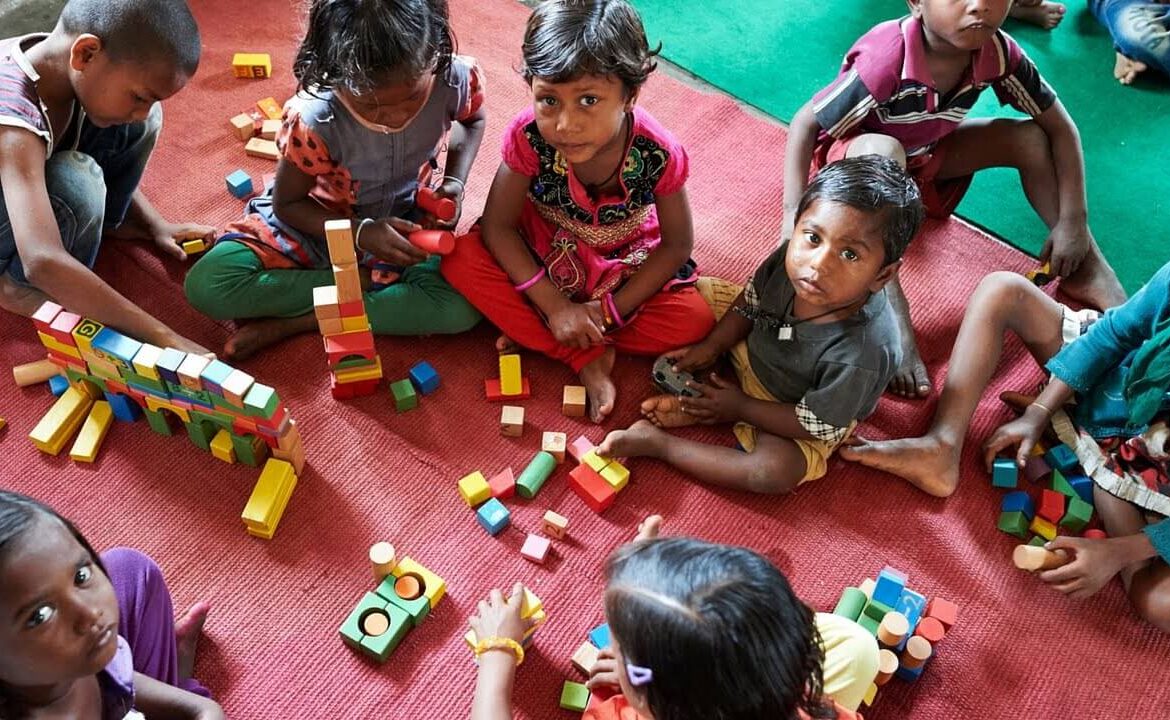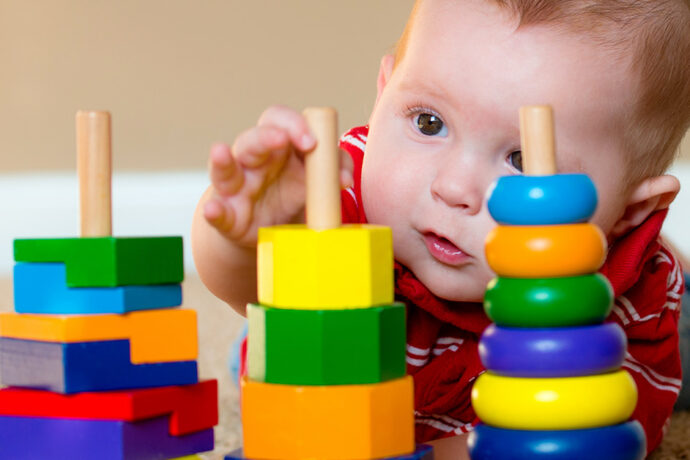What are Early years?
People all over the world use the term ‘early years’ in slightly different ways. According to the UNICEF website, early childhood is defined as the period from conception through eight years of age; to others it means the years before school, while in some countries it refers mainly to the first three years of life.
Regardless of what terms we use, research suggests that all these periods are critical in every child’s life. A large body of worldwide research indicates that exposure to enabling environments and access to appropriate inputs during this period is crucial to ensuring that children have a firm foundation to build on, both at home and at school.
As per the 2011 census, children in the age group of 0-6 years constitute around 158 million population of India.
Why are Early years considered to be significant?
Investing in Early years is important and is well known throughout the world. According to research in Neurosciences, in the first three years, a child’s brain has up to twice as many synapses as it will have in adulthood.
A child’s brain undergoes an impressive amount of change between conception and the first three years after birth. Research suggests that, at birth a child has about all the neurons it will ever have, doubles in size in the first year, and by the age of three it reaches 80 percent of its adult volume.
Most importantly, synapses are formed at a faster rate during the first three years than at any other time. These ‘formative years’, are a time when a brain develops and much of it’s ‘wiring’ is laid down.
Positive experiences and relationship, along with attention to proper nutrition and health can help the brain of a child develop in healthy ways. However, a child can be negatively influenced by many different adversities including aspects such as neglect, violence in the home, abuse, lack of opportunity for play and cognitive stimulation, parental ill-health and affect brain development in more harmful ways thereby contributing to emotional and behavioural problems later in life. Therefore, the experiences a child has in the early years can either support learning or interfere with their overall development.
Essentially, early childhood development is a basic human right. The United Nations Convention on the Rights of the Child also declares that each child has the right to develop to “the maximum extent possible”.
Policies in India to support Early years and Education.
Recognising the importance of the early years (ECD), Target 4.2 of the Sustainable development Goals states that by 2030 countries should: ‘ensure that all girls and boys have access to quality early childhood development, care and pre-primary education so that they are ready for primary education’. However, SDG commitments to ECD are much broader than this education focused target.
India has the world’s largest ECD programme, the Integrated Childhood Development Services scheme (ICDS), that has the potential to deliver high quality child health and developmental services. It provides the critical frame of reference for most non-governmental organisation (NGO) activity. The chalk horse of these services is the Anganwadi Centers (AWCs) where an entire array of early childhood services is provided, focussing largely on supplemental nutrition, immunization, and other basic health and early preschool education needs. The Ministry of Women and Child Development (MWCD) is responsible for the policy on ECCE and is in charge of delivering the pre-school component of ICDS Scheme to its beneficiaries.
In addition to this, India has also developed additional schemes, policies and frameworks, such as the National Early Childhood Care and Education policy (2013); the National Early Childhood Care and Education Curriculum Framework (2014); and the draft Framework for Implementation of Samagra Shiksha (Integrated Scheme for School Education), with an emphasis on the pre-primary stage and thereby, bringing this stage of development in focus and integrating it with all other levels of schooling.
After almost 34 years the central government approved the new National Education Policy 2020 on July 29,2020, where schooling begins with the inclusion of ECCE from age 3. In the policy, the government calls for “Universal provisioning of quality early childhood development, care, and education”, by 2030, to ensure that all students entering Grade 1 are school ready. It underlines the importance of early childhood education and prescribes guidelines for providing pre-primary education.
The reality however, in the urban slums of India, where very few of these AWCs operate, child health and developmental services are mainly delivered by NGOs and other Voluntary organisations. In addition to this there is a huge disparity between the level of attainment between the advantaged and disadvantaged children. So, the question is, where is the gap and why despite the various policies Early years is not the primary focus in India?
Where is the Gap?
It has been unanimously agreed that the Early Years is the most important stage of development of the human brain. A large body of worldwide research demonstrates that exposure to enabling environments and access to appropriate inputs during this period contributes significantly to the Long-term growth and learning.
The National Education Policy 2020 has emphasized the importance of parents as carers in providing the child with a stimulating learning environment, and that the first two-and-a-half to three years need not be in a structured learning environment. Although the policy recognises the value of including parents, family and society, and seeks to help Early-Years Practitioners, Service Providers, ECCE teachers etc in providing children with rich early stimulation and learning opportunities from birth to pre-primary, there is a big gap between the advantaged and the disadvantaged children.
In a blog post written by the Deputy Chairman and Chief Operating Officer at KPMG, Scott Ozanus, writes that research has shown that learning gap between the advantaged and disadvantaged children can show up as early as nine months of age.
The gap then perhaps lies in the fact that we are not investing enough in the key players in the child’s formative years, that is, the main carers/parents.
What do children need to support learning in the early years?
As discussed earlier, 80 percent of the child’s brain develops within the first three years of the child’s life. Children need all the tools to develop the basic skills needed for future development, namely, communication and language development, physical development and personal, social and emotional development.
On a very primary level, they need
- Caring adults
They need to be around adults who help them to stay safe and healthy; develop positive caring relationships that are ongoing; adults who love and respect the child’s feelings, needs and interest and those who model appropriate behaviour thereby teaching them how to control their own behaviour.
- Stimulating learning environment
They need materials and experiences to learn from and opportunities to be actively involved in meaningful experiences.
What is happening now?
The policies and existing systems at best start working with children from 3 years onwards, ignoring infants and toddlers. Even so, a child’s brain undergoes an impressive amount of change between conception and the first three years after birth. Learning begins at birth, through stimulation, verbal and non-verbal cues, attachment, play and their immediate environment. However, due to lack of parental awareness, especially in the disadvantaged households’ children do not have access to a stimulating early learning environment. Many low-income families send their children to low-cost pre-schools as early as 2 years of age, where they are exposed to mostly developmentally inappropriate teaching approaches or a very structured and rigid learning environment, which can be counterproductive to their overall development.
How can we close the gap?
Immediate action needs to take place to tackle the deficit in early years. The most intelligent and cost-effective strategy to implement would be through the five concerted actions.
First, to design and put in place a meaningful activity-based Early Childhood framework that recognises the local context, setting and challenges faced by the beneficiaries.
Second, roll out the programmes designed in already existing NGOs (working in the child-development sector), Angarwadi centres and schools.
Third, the need for Early Years education needs to move into the centre of the current debate on educational policies in India. There has to be more investment in training staff to implement the programmes, who have thorough knowledge of Early Childhood Development and are able to assess the needs of the children early on through observations and group activities.
Fourth, Immediate action needs to be put in place to build awareness amongst primary care givers regarding the stages of development in children and how they can best provide the care and stimulation required for children in the early years of their lives.
Finally, age-appropriate activity-based sessions should be made available for both children and their parents to access, and trained staff to oversee the activities and encourage parents to engage in the learning and development of the children.


